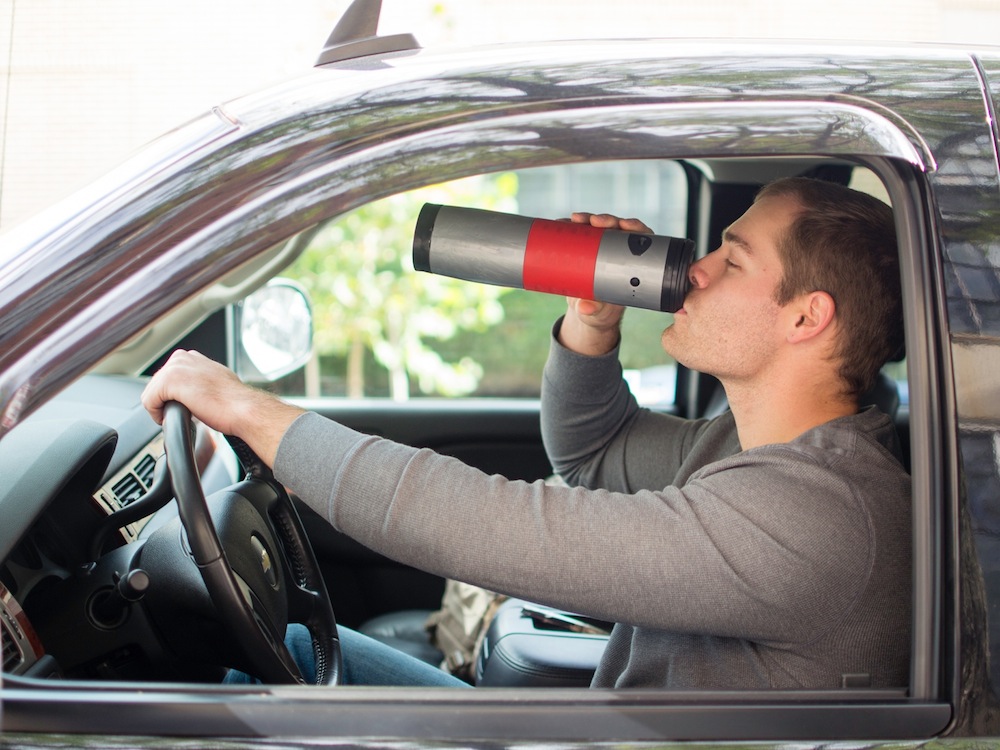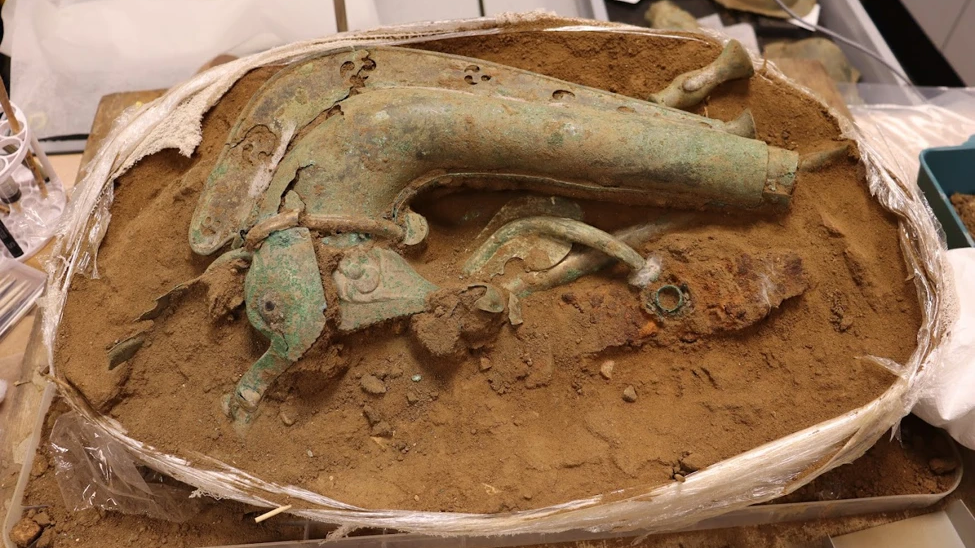
'Mojoe' on the Go: New Thermos Doubles as Portable Coffeemaker

Say good-bye to those mornings spent waiting in line at the local coffee shop: A new mobile brewing device that looks like an everyday thermos could help coffee lovers make — and enjoy — their caffeine fix on the go.
The "mojoe," short for "mobile cup of joe," is a portable coffeemaker that doubles as a travel mug. The handy device offers few outward clues to its coffee-brewing prowess, aside from a couple tiny on/off LED lights, a charging port and a slightly elongated shape.
Even midbrew, the mojoe stays incognito; it doesn't make the burbling and gurgling noises that a regular coffee pot makes. "What you may hear is just a little bit of bubbling right before it's about to siphon," said Joseph Hyman, inventor of the mojoe and CEO of MoJoe Brewing Co. "It's very, very low noise." [10 Interesting Facts About Caffeine]
Hyman first dreamed up what would become the mojoe when he was a college student studying late at night in the library. He didn't want to leave his spot and dish out money to buy a coffee from the shop in the library's lobby, and he knew if he returned to his dorm room, he'd lose motivation to trek back to the library. So, he thought, "Why isn't there a mobile coffeemaker?" he told Live Science.
The mojoe is the first of its kind, Hyman said, because unlike other portable coffeemakers on the market, the mojoe does not require you to heat water before brewing, and it can withstand superhot temperatures. To create a self-contained coffee-brewing system within a travel mug, Hyman and his team figured out how to combine aspects of drip brewing with vacuum brewing in a small, light and durable device.
Most conventional coffeemakers are drip brewers that involve pouring hot water over ground coffee beans. Vacuum brewers, on the other hand, look more at home in a chemistry lab than on a kitchen stove. A vacuum brewer often has a clear, hourglass-shaped chamber suspended in space by a metal grip extending from a thin but sturdy stand. Water sits in the bottom bulb of the hourglass until it gets hot enough to convert to water vapor. This vapor expands in the bottom bulb until running out of room, building up enough pressure to push hot water up through a glass siphon connecting the bottom and top bulbs. Once the vapor reaches the upper bulb, which contains coffee grounds, the hot water mixes with the grounds and turns into coffee. When the coffee is fully brewed, the stove is shut off, the vapor condenses and the brewed coffee falls back into the bottom bulb.
The mojoe also harnesses water-vapor pressure to energize and move water, but the device relies on drip brewing to actually make coffee. "We used science to do two things," Hyman said, namely to move water and turn that water into coffee. The patented system in the mojoe is called VacDrip.
Get the world’s most fascinating discoveries delivered straight to your inbox.
Similar to a vacuum brewer, the VacDrip system heats water,turning it into a vapor that gets siphoned into a different chamber. However, unlike in a vacuum brewer, the two chambers in the mojoe are side-by-side rather than on top of each other. [5 'Hidden' Sources of Caffeine]
With the mojoe, water begins in a center compartment that runs the length of the mug. The water is heated using power from the mojoe car adapter, a wall-plug adapter or a rechargeable battery. Once the water is heated to 200 degrees Fahrenheit (93 degrees Celsius), the water vapor starts to push hot water up through a siphon in the middle of the compartment. When the water reaches the top of the mojoe, the siphon deposits the water into a mesh basket of coffee grounds. Water seeps in the basket and then drips out as coffee, just as it would in a drip brewer, Hyman said. The freshly brewed coffee fills the space between the center compartment and the wall of the mug.
The correct brewing temperature for coffee is 200 degrees Fahrenheit, and, "coincidentally, right around 200 degrees is when water starts to produce a lot of water vapor," Hyman said. "Once all the water comes out, you hear a very low "schuuuuu," and that's the vapor pressure releasing," he added. Only about 5 to 10 percent of the water will turn into vapor during the brewing process; vapor is the vehicle that moves the water, Hyman said.
Any part of the mojoe that comes in contact with 200-degree-Fahrenheit water is made of superdurable plastic called HDPE, or high-density polyethylene, Hyman said. HDPE is a popular material for kitchen gadgets, and therefore it's washable and resistant to sticky foods, he added. To attach the various parts of the mojoe, Hyman and his team had to find a special food-grade adhesive that could both bind to HDPE and resist heat.
"This whole thing was an engineering challenge," Hyman said. Not only were the materials tricky to assemble, but also the power source had to be strong enough to transform water. "Water is such a great insulator, and it requires a lot of joules [energy] to heat water," Hyman said. "It doesn't want to get hot."
The mojoe can be powered directly through an outlet or with a car charger, Hyman said. The mojoe also has a battery pack that takes about 20 to 30 minutes to charge. With the battery pack, the mojoe weighs about 1.3 lbs. (0.6 kilograms); without the battery, it weighs 0.7 lbs. (0.3 kg). The mojoe can hold up to 8.5 ounces (250 milliliters) of liquid and can brew tea and hot chocolate in addition to coffee.
The mojoe raised $85,860 through a crowdfunded Kickstarter campaign and can currently be pre-ordered only through the MoJoe Brewing Co. website. Hyman said he expects the mojoe will be ready to ship in May.
Follow Live Science @livescience, Facebook & Google+. Original article on Live Science.



